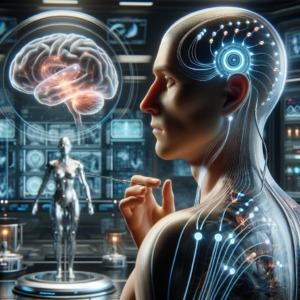Google’s AI-Generated Super Bowl Cheese Ad Has Some Holes
The Super Bowl is not just a football game; it’s a cultural phenomenon. Millions of viewers tune in every year, not only for the thrilling matchups but also for the much-anticipated commercials that pepper the broadcast. This year, Google made waves with its AI-generated advertisement featuring cheese. However, the ad has sparked conversations and critiques, showcasing both the potentials and limitations of artificial intelligence in creative advertising.
The Concept Behind the AI-Generated Ad
Google’s cheese ad was designed to engage audiences in a fun and quirky way, highlighting its advanced capabilities in artificial intelligence. The premise revolved around the idea that AI could not only analyze trends but also create content that resonates with viewers. The ad features comical scenes that revolve around cheese—its production, consumption, and even its cultural significance, all rendered through the lens of AI.
Why Cheese?
Cheese, a staple in many households and a beloved food item across cultures, was the perfect subject for an ad aimed at a diverse audience. The choice of cheese as the focal point of the advertisement reflects an effort to tap into a universally appreciated theme—food. Moreover, it aligns with the Super Bowl’s reputation for being a time when people indulge in snacks and comfort food, enhancing the relevance of the ad.
AI: The New Creative Force?
The introduction of AI in creative processes has raised questions about its effectiveness. Google’s initiative demonstrates an ambitious leap into integrating AI with marketing strategies. But what does this mean for the future of advertising? While AI can generate ideas and content at a rapid pace, it lacks the nuanced understanding of human emotions and cultural contexts that professional creators possess.
The Pros and Cons of AI in Advertising
There are several advantages and disadvantages to using AI for creative endeavors:
- Pros:
- Speed: AI can produce content much faster than human creators.
- Cost-Effective: Reducing the need for large creative teams can lower production costs.
- Data-Driven: AI can analyze consumer data to create targeted content that appeals to specific demographics.
- Cons:
- Lack of Emotion: AI-generated content may miss the emotional nuance that resonates with audiences.
- Limited Creativity: AI can only synthesize existing ideas and concepts; it struggles with true innovation.
- Potential Errors: The ad generated by AI has been critiqued for containing logical flaws and inconsistencies.
Critiques of the Cheese Ad
While the ad has undoubtedly garnered attention, it has also faced its share of critiques. Viewers have pointed out multiple “holes” in the narrative and logic presented in the advertisement. Some scenes seemed disjointed, failing to create a coherent storyline that effectively communicates a message.
Viewer Reactions
Viewer feedback has been mixed. Some praised the novelty of an AI-generated ad, while others highlighted its shortcomings. The humor, intended to appeal to the audience, came off as forced in some instances. This has raised questions about whether AI can truly understand the subtleties of humor and storytelling that are critical to engaging advertising.
The Future of AI in Advertising
Despite the critiques, the Google cheese ad opens up an important dialogue about the role of AI in creative industries. As technology continues to evolve, it is likely that we will see more brands experimenting with AI-generated content. The key will be finding the right balance between human creativity and AI efficiency.
Integrating AI and Human Creativity
The path forward may involve a hybrid model where AI handles data analysis and preliminary content generation, while human creators refine and contextualize the final output. This approach could leverage the strengths of both AI and human intuition, leading to more effective advertising strategies.
Lessons Learned from the Cheese Ad
The mixed reception of the Google cheese ad serves as a reminder that while AI can be an invaluable tool in the marketing toolkit, it is not a complete substitute for human creativity. Advertisements need to resonate on a personal level, requiring insight into cultural nuances and emotional appeal that AI currently cannot replicate.
What Marketers Should Consider
For marketers looking to incorporate AI into their campaigns, several considerations should be kept in mind:
- Understand Your Audience: Use AI to gather data on consumer preferences but rely on human insight to interpret this data meaningfully.
- Maintain a Human Touch: Infuse storytelling with human experiences and emotions to create relatable content.
- Iterate and Test: Use AI-generated content as a starting point, but be prepared to adapt and revise based on audience feedback.
Conclusion
Google’s AI-generated Super Bowl cheese ad represents an exciting frontier in advertising but also highlights the limitations of AI in creative fields. As the industry navigates this new landscape, the emphasis must remain on delivering authentic and emotionally resonant content. The blending of AI capabilities with human creativity holds the potential for more innovative and engaging advertising as we look towards the future.
As we move forward, it will be fascinating to observe how brands leverage AI technologies while ensuring that the ads they produce continue to connect with audiences on a deeper level. The cheese ad may have had some holes, but it certainly sparked a significant conversation about the future of advertising in the age of artificial intelligence.



